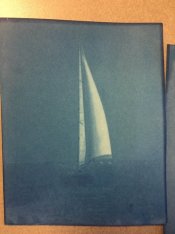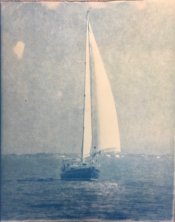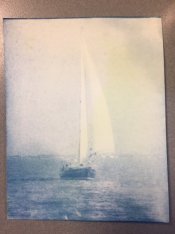ChristopherCoy
Subscriber
I need advice on how to proceed. This is my first cyanotype attempt from a DNG.
I used the chartthrob wedge and analyzed the print to get my base curve.

I then coated my paper, and it ended up drying for about 24 hours. I started with a base time of 4 minutes, and got this result.

Noting the darkness of the image, I decreased my time to 2 minutes, and made another. This is the result.

It was still quite dark so I took the exposure down to 1 minute, and made a third print.

Third image still wasn't satisfactory, so I thought perhaps it was because I let the coating dry too long, so I made a freshly coated paper, dried it with the hair dryer, and made a 4th print, at 1 minute exposure. This is the result.

I'm not sure how to proceed on this one. I have a feeling its going to be a curves adjustment, I'm just not sure how to go about it. Also this is a 4x5 negative. My goal is to print it in 8x10 so I'm assuming that I should just go ahead and print the negative at 8x10 since exposure and contrast setting will change from size to size, correct?
This is the digital image that I'm trying to print.
 Sailing by Christopher Coy, on Flickr
Sailing by Christopher Coy, on Flickr
I used the chartthrob wedge and analyzed the print to get my base curve.
I then coated my paper, and it ended up drying for about 24 hours. I started with a base time of 4 minutes, and got this result.

Noting the darkness of the image, I decreased my time to 2 minutes, and made another. This is the result.

It was still quite dark so I took the exposure down to 1 minute, and made a third print.

Third image still wasn't satisfactory, so I thought perhaps it was because I let the coating dry too long, so I made a freshly coated paper, dried it with the hair dryer, and made a 4th print, at 1 minute exposure. This is the result.

I'm not sure how to proceed on this one. I have a feeling its going to be a curves adjustment, I'm just not sure how to go about it. Also this is a 4x5 negative. My goal is to print it in 8x10 so I'm assuming that I should just go ahead and print the negative at 8x10 since exposure and contrast setting will change from size to size, correct?
This is the digital image that I'm trying to print.
 Sailing by Christopher Coy, on Flickr
Sailing by Christopher Coy, on Flickr

